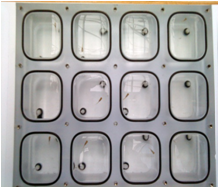fast spinning movements (FSM) / spinning movements (SpinMov)

research area: biology
experiment title:
(Fast) Spinning Movements
experiment acronym: FSM / SpinMov
funding agency: DLR
performing organization:
Institut für Zoologie, Universität Hohenheim, Stuttgart
prime investigator: Prof. Dr. Reinhard Hilbig
experiment objective
abstract
The spinning movements (i.e., turning around the longitudinal axis), which are induced by microgravity in some individual fish at rest (i.e., without applying an additional acceleration) indicate another possible source of illusionary tilts: individually asymmetric vestibular maculae (caused by an asymmetric degeneration of the sensory epithelium or a respective loss of nerve fibers, or, based on side to side differences in the weight of otoliths due to an asymmetric calcification) will, at rest and under 1 g earth gravity, possibly cause slightly asymmetric shearing forces on the utricles, since the respective maculae are not exactly horizontally oriented. A normal posture then would require a (small amount of) “offset-compensation”, which would compensate for the asymmetrical discharge rates. Usually, postural control in fish is maintained by a neuronal computation of vestibular and visual inputs. The brain can thus detect an otolith asymmetry and effect compensatory countermeasures. At microgravity, weight differences in the otoliths from one side of the body to the other side would then not anymore be given and the (primary) discharge rates should not be asymmetrical now. A continuing, but now unnecessary offset compensation, however, would then cause erroneously (secondary) asymmetric discharge rates leading to the aforementioned spinning movements. (Only after some time in the range of minutes until days depending on a variety of parameters, the brain will detect – again using especially visual cues – that the otolith asymmetry is gone; the now detrimental compensation will consequently be discontinued and behavioral habituation/adaptation will take place.)
experiment campaigns
experiment year: 2010
number of drops: 6 (SpinMov)
experiment year: 2009
number of drops: 2 (FSM)


 "
"